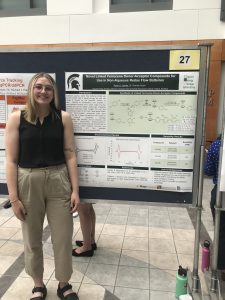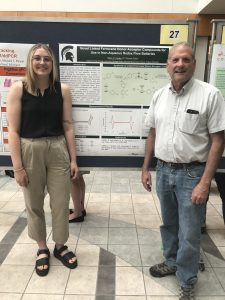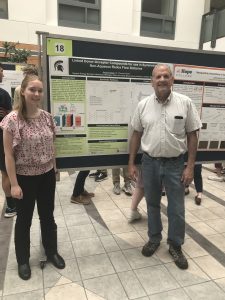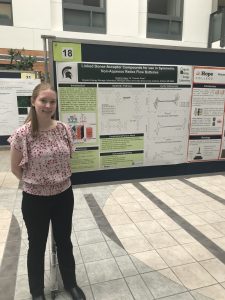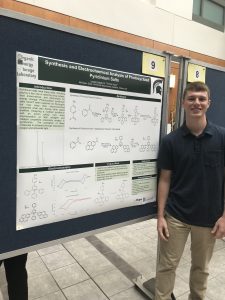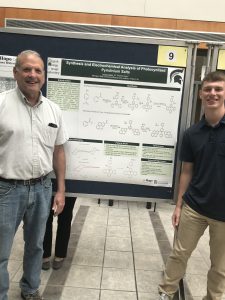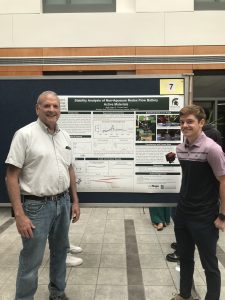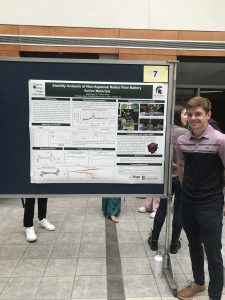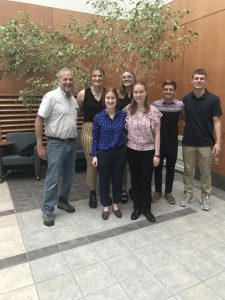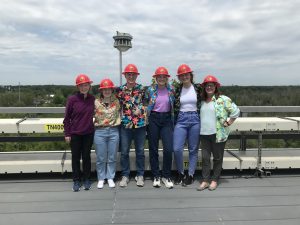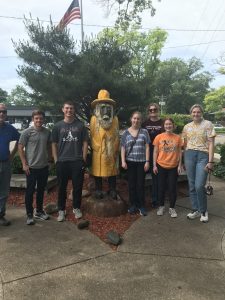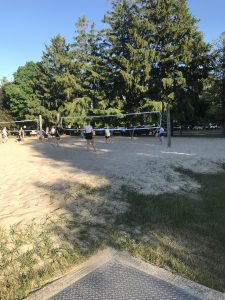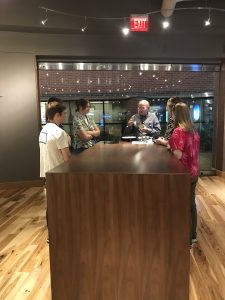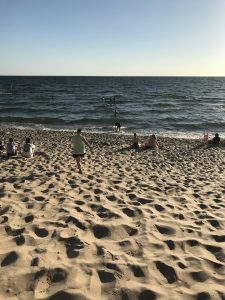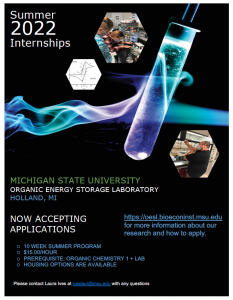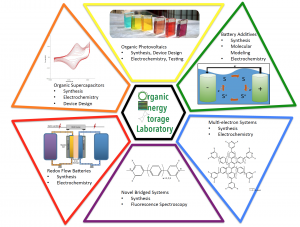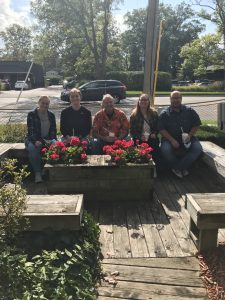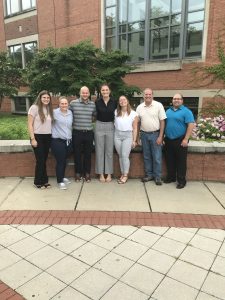Taylor is a Biological Laboratory Science major at Davenport University…
Novel Linked Ferrocene Donor-Acceptor Compounds for Use in Symmetric Non-Aqueous Redox Flow Batteries
Taylor Opolka
Dr. Thomas Guarr
Organic Energy Storage Laboratory at Michigan State University Bioeconomy Institute
Traditional aqueous redox flow batteries are common vessels used in energy storage, but their cell voltage is limited by the potential window of water. Shifting to non-aqueous cells provides a larger potential window and a wider range of active materials that can be utilized. Additionally, employing bifunctional molecules helps mitigate the cost and environmental impact of such cells. Novel linked ferrocene donor-acceptor compounds show great promise for use in these non-aqueous cells based on their physical properties, including good stability, high solubility, and an attractive cell voltage. Two phenyl-linked ferrocene-pyrylium compounds have been synthesized and characterized via mass spectroscopy, nuclear magnetic resonance, and cyclic voltammetry, and have exhibited favorable properties for use in nonaqueous redox flow batteries
Taylor was with us for what may be a record of 16+ weeks of internship. We enjoyed having you Taylor. Keep in touch your last semester at Davenport.
